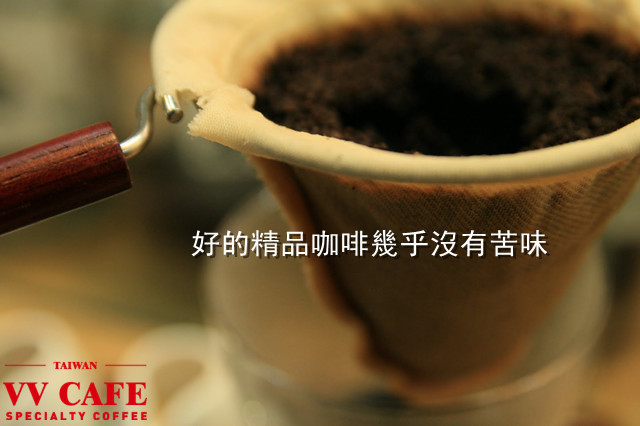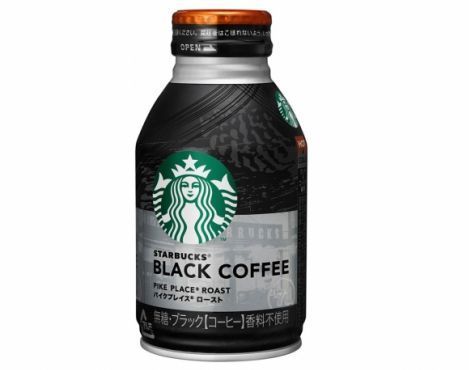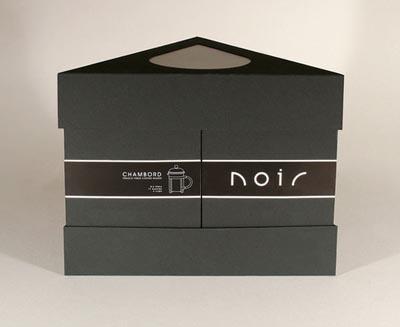Is bitterness an essential flavor of coffee?
Having talked about coffee acids that make me happy and worry about me, let's also take a moment to think about the established impression that most people have of coffee: bitterness.
Bitter coffee ah bitter coffee, why senior sweet pearl milk tea do not drink, just choose bitter coffee?
The answer is simple: good specialty coffee is hardly bitter.

This is contrary to the public's impression of coffee, not to mention black coffee without sugar and milk, even general fancy coffee such as cappuccino, latte, and even triple play are somewhat bitter, how to say that fine coffee is not bitter?
First we must understand the source of bitterness:
1. Overbaking: charring
Coffee roasting process uses high temperature to caramelize starch in coffee beans, thus bringing sweetness and mellow feeling. Whether it is light baking, medium baking, deep baking, etc., the caramelization process is inevitable, but the degree of heating, the time of different sweetness performance.
If the caramelization temperature is too high or too long, it will be burnt and bitter, this phenomenon is called carbonization. Like granulated sugar sticking to the surface of a pot, overheated sweetness turns into a pronounced burnt bitterness.
Does that mean that deep baking will definitely have a burnt bitterness? Not necessarily, it could only be said that the probability of bitter taste was relatively high.
Imagine putting sugar in an iron pan and frying it. If the fire is high or opened for a long time, the sugar is indeed more likely to burn, but if it is combined with rapid frying, so that the sugar is evenly heated, it may not produce bitter taste.
However, even if it is a small fire or a short time, if it is not well taken care of, the sugar near the bottom of the pot will still be carbonized and bitter.
It can be seen that bitter taste is definitely not the patent of deep roasting. As long as the roasting process is heated unevenly, the surface of coffee is easy to receive too much heat, which makes the skin carbonized and naturally bitter.
Most non-specialty coffees are treated with deep roasting to increase the sweetness of the coffee and mask the obvious flavor defects of the defective beans. In addition, the process of roasting is often neglected, which often causes many coffee beans to burn coke, resulting in bitter taste.
Unfortunately, bitterness itself is particularly prominent in the taste system, so even espresso and three-in-one coffees with lots of sweetened milk to try to mask bitterness can make people aware of bitterness.
Not to mention that most of the traditional black coffee was also deeply roasted, and at that time, the roasting concept was still lacking, resulting in the carbonization of the epidermis without knowing it, so that everyone drank bitter coffee for more than ten years. This was really a strange situation that was inexplicable but accepted by the world.
2. Bitterness of chlorogenic acid transformation
The first point is about the bitterness caused by carbonization. Basically, there is nothing to say. It is a very bad bitterness, which makes people frown.
But just as acids have two sides, bitterness has another possibility that is more acceptable and even adds flavor complexity, and this good bitterness is largely due to chlorogenic acid.
Chlorogenic acid is one of the sources of sour taste in coffee beans, and chlorogenic acid is converted into chlorogenic acid lactone after heating in the roasting process, with a weak and mild bitter taste.
Therefore, excluding the bad bitterness brought by carbonization, beans below medium baking may also have a little bitterness, but it is not obvious, and because it is contained in the complex flavor of fruit acid and sweetness, it is often not particularly prominent.
And this weak bitterness, in the rich taste, sweet and sour coffee, can reduce the sweetness of the beans, keep the mouth fresh, and even strengthen the sweet effect in the ending, strengthen the complexity.
However, this bitterness must not exceed, otherwise it would be another disaster. If it directly overpowered the sour and sweet taste, it would put the cart before the horse and kill the good taste.
After deep baking, the chemical reaction continues, and chlorogenic acid lactone is converted into phenyllindane, which has a stronger bitter taste. This bitter taste is a bit severe.
Generally, phenyllindane begins to be produced after the second explosion. Generally, deep baking ends around the second explosion, so the proportion will not be too high. When mixed with rich caramel sweetness, it will not be particularly obvious.
If this bitterness is properly mastered, it may also produce the impression of bitter sweetness (or sweetness should be the main one, and bitterness should not be too high)
However, if you continue to bake, after pulling to the second explosion, the whole bean presents a dark and oily ultra-deep baking (or overweight baking), the proportion of phenyllindane is naturally high, and the bitter taste cannot be avoided. It becomes bitter and sweet, and the oral cavity will become uncomfortable, which is not a normal phenomenon.
3. Defective beans, rotten beans
When the grade of coffee beans is very low, the quality of coffee cherries is not uniform, improper handling leads to corruption, poor storage and so on. It can also cause coffee beans to take on an odd taste and take on an unpleasant bitterness after roasting.
While this tends to happen with cheaper beans, fine coffee is usually carefully tended and relatively less likely to happen.
After understanding the origin of coffee bitterness, it is natural to have a question: Is the bitterness I drink from carbonization or chlorogenic acid conversion?
The question is complex and difficult to discern with the tongue alone, but it doesn't matter at all whether bitterness plays a role in flavor that is pleasant or unpleasant.
As mentioned earlier, good specialty coffee has almost no bitterness. To use a more refined term, good specialty coffee is not particularly aware of bitterness.
Even if chlorogenic acid is converted into chlorogenic acid lactone, even phenyllindane, non-irritating carbonization, in the right proportion, may also increase flavor performance.
However, senior students especially stressed that in Taiwan's fine coffee market with strong fruit acids and delicate aroma, the above use of bitterness to add flavor is rare and not easy to operate, because:
1. Consumers do not rate bitterness highly (or even loathe it).
2. Consumers who bring home their own brew may amplify the subtle bitterness in proportion, leading to the destruction of the whole package.
Therefore, the general store will try to avoid bitterness, after all, it is not so pleasing.
A few can carefully grasp the bitter texture of the store, if lucky to come across, might as well try to feel the bitter taste brought about by the interesting taste change, perhaps will fall in love with this bitter sweet taste oh.
Finally, if the bitterness is strong or protruding enough to make you feel uncomfortable or strange, it is definitely not a good cup of coffee.
Don't convince yourself that coffee is bitter, and don't wonder if you are a coffee layman who doesn't understand the bitterness in front of you. Good quality coffee doesn't make you so miserable, good taste doesn't make you so hard.
In addition, bitter and sour are not the same, it is difficult to dilute with water, nor will it become sweet, so the best way to encounter unbearable bitterness is not to drink, after all, rather than drink bitter coffee, it is better to drink boiled water.
Source: TAIWAN VVCAFE Author: vvcafe Station Soul Senior
Important Notice :
前街咖啡 FrontStreet Coffee has moved to new addredd:
FrontStreet Coffee Address: 315,Donghua East Road,GuangZhou
Tel:020 38364473
- Prev

Starbucks Japan teamed up with Suntory to launch bottled black coffee and sold it to convenience stores.
If you travel to Japan now, you may see a bottled drink called Starbucks Black Coffee on the container in the convenience store. It is not a fake, but a new partnership between Starbucks Japan and local company Suntory. Although Starbucks, which entered the Japanese market as early as 20 years ago, began to launch RTD bottled drinks 10 years ago,
- Next

Oh, my God! The coffee packaging designed by foreign countries was killed instantly.
Most of us drink coffee from finished products, or some common brands of instant coffee. But do you only know? In fact, the packaging of some coffee is very attractive. For this packaging, many people will not miss it. The packaging of this black coffee from the outer packaging box to the contents of the box, although the feeling is very simple, but can not help but love, feel very high-tech
Related
- What ratio of water temperature and ground does the smart cup method use to press coffee? The difference between brewed coffee and filtered coffee?
- What is the standard process for the purpose of coffee cup testing? What is the difference between hand-brewed coffee and cup testing?
- How to use hand-brewed coffee paragon small golden balls? How does cold coffee lock in the aroma of coffee?
- Is American coffee black? What is the difference between American coffee and drip coffee?
- Unexpected! Well-known tea beverage brand Lele Tea will withdraw from the Zhengzhou market!
- Starbucks enters the fashion and beauty industry?! Netizen: Give me an ice American eye cream
- Why can American refills for free? The difference between Americano and American drip pot coffee
- Being chased out of the rain in front of Starbucks?! Store: Sheltering from rain under umbrellas poses a safety hazard
- The white moonlight has changed?! Lucky launches "Big Winter Pear American"
- Hand-brewed coffee three-stage method, high-sweet and universal brewing method to share! What does the high sweet water level of hand-brewed coffee mean?

